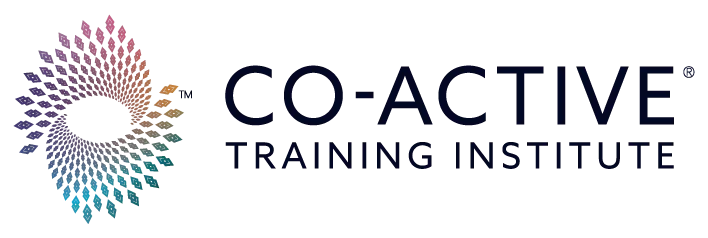This guide helps coaches, managers, and leaders build stronger relationships through designed alliances—a proven Co-Active framework for creating trust, setting clear expectations, and fostering authentic collaboration.
You walk into your first coaching session or team meeting with good intentions, but within minutes, you sense the tension. Expectations are unclear, trust feels fragile, and everyone seems to be guessing what success looks like. Sound familiar?
Most workplace relationships fail because people make assumptions instead of having honest conversations about how they’ll work together. But there’s a solution that transforms how people collaborate: the designed alliance.
Here’s what you’ll learn: the core agreements of designed alliance coaching, step-by-step instructions for building trust through co-created agreements, and practical examples you can use today.
Ready to transform your professional relationships? Explore Co-Active Foundations to learn more about this game-changing approach.
What Is a Designed Alliance?
Before you can design an alliance, you need to understand what makes it different from every other type of agreement you’ve made at work. It’s not a contract, job description, or set of rules—it’s something far more powerful.
The Alliance as Container for Coaching
A designed alliance in coaching is a purposeful, stated agreement that defines how people will work together, communicate, and handle challenges throughout their relationship. Think of it as co-creating the rules of engagement before you start the real work.
Unlike traditional contracts or job descriptions, designed alliances are living agreements. They evolve as relationships deepen and circumstances change. The conversation to design your alliance is your superpower for lasting collaboration.
This approach comes from the Co-Active Model, which believes that every person is naturally creative, resourceful, and whole. When you operate from this foundation, you create space for authentic partnership rather than hierarchical control.
The Core Agreements of Designed Alliances
At the heart of every designed alliance are three core agreements that transform how people relate:
Equal Partnership: Both parties have equal voice in shaping how the relationship works, regardless of title or experience level. This doesn’t mean equal expertise—it means equal humanity and equal stake in success.
Shared Accountability: Everyone takes responsibility for making the alliance work. When something isn’t working, both parties look at how to adjust the agreement rather than blaming each other.
Living Agreement: The alliance can and should evolve. What works in month one might need tweaking by month three, and that’s not failure—it’s growth.
Why Alliances Matter for Teams
Workplace teams that use designed alliances report less conflict and better collaboration outcomes. Why? Because they’ve taken the guesswork out of how to work together effectively.
Most team problems aren’t about competence—they’re about unclear expectations and unspoken assumptions. Building a coaching culture starts with these fundamental agreements about how people will show up for each other.
When teams co-create their alliances, they build psychological safety naturally. Everyone knows what to expect, how to communicate concerns, and how to celebrate wins together.
How to Build Your Designed Alliance
The magic happens when you stop assuming and start asking. Here’s your roadmap for creating alliances that actually work.
Steps to Co-Create Trust & Expectations
Step 1: Set the Stage Begin every alliance conversation by explaining why you’re having it. “I want us to have the best possible working relationship, so let’s talk about how we can make that happen.”
Step 2: Share Your Commitments Be the first to put something on the table. “Here’s what you can count on from me…” This vulnerability invites reciprocity and shows you’re serious about partnership.
Step 3: Invite Their Voice Ask open-ended questions that give the other person real influence over how you’ll work together. The goal is co-creation, not selling them on your preferred approach.
Essential Questions for Alliance Conversations
These questions help you design alliances that address the real issues people face in professional relationships:
- “What do you need from me to do your best work?”
- “How do you prefer to receive feedback?”
- “What should we do when we disagree?”
- “How will we know if this relationship is working?”
- “What would make you feel truly supported in this partnership?”
The power of designing your alliances lies in asking questions that most people never think to ask—until problems arise.
Try Tomorrow: Pick one important relationship in your work life. Schedule 30 minutes to have an alliance conversation using three of these questions. Notice how the quality of your interaction changes.
Practical Examples (Coaching & Teams)
For Coaches: “Sarah, before we dive into your goals, I want us to design how we’ll work together. I’m committed to being fully present during our sessions and asking the tough questions when I sense you’re avoiding something important. I’ll also share what I’m noticing about patterns, even when it might feel uncomfortable. What I need from you is complete honesty—if a question doesn’t land right or if you feel like I’m missing something, please tell me in the moment. How does that sound to you?”
For Managers: “Mike, I want to support your promotion to senior developer while making sure our sprint goals stay on track. I’ve noticed you sometimes hesitate to speak up in team meetings when you disagree with technical decisions. I’d like us to agree that you’ll flag concerns directly to me within 24 hours, and I’ll make space for you to voice them to the team. In return, I commit to having your back when you take technical risks that don’t pan out. Does that work for you? What else do you need from me to feel confident stepping into more leadership?”
For Teams: “During our last three project retrospectives, we’ve danced around the fact that our code review process is creating bottlenecks. We agreed to speak directly about problems rather than talking around them. So let’s practice that right now: I think we need to address that three people are doing 80% of the reviews while others wait days for feedback. Here’s what I propose we try for the next sprint… What’s your take on this?”
Designed Alliance in Action
Trust isn’t built through good intentions—it’s built through clear agreements and consistent follow-through. Here’s how designed alliances create measurable change in real workplaces.
Real-World Workplace Impact
Companies using designed alliance agreements report measurable improvements in team performance. One tech startup saw their project completion rates increase by 28% after implementing alliance conversations in every team formation.
Their secret? Instead of assuming everyone knew how to collaborate, they explicitly discussed how to handle disagreements, who would make final decisions, and how to give feedback without damaging relationships.
Most workplace dysfunction comes from people trying to read minds instead of asking direct questions about expectations. The human-centered path to team culture transformation starts with these honest conversations.
When conflicts arise—and they will—teams with designed alliances have a framework for addressing them. Instead of personalizing problems, they return to their agreement and ask, “What needs to change?”
Common Pitfalls and How to Avoid Them
Pitfall 1: Making it too formal. Designed alliances work best when they feel like conversations, not contracts. Keep the tone collaborative and human.
Pitfall 2: Set it and forget it. Schedule regular check-ins to see how your alliance is working. Quarterly reviews prevent small issues from becoming relationship-ending problems.
Pitfall 3: Avoiding difficult topics. The whole point is to address the awkward stuff before it becomes a problem. Don’t dance around the real issues.
Resources, Templates, and Exercises
Ready to start designing alliances? The Co-Active toolkit resources include practical templates and question guides for different types of relationships.
For deeper learning, consider how designed alliances connect to best ways to improve employee engagement—because engaged employees are those who feel heard and valued in their working relationships.
Try Tomorrow: Download a designed alliance doc and use it in your next team meeting or coaching session. Start simple: pick three questions that address your biggest relationship challenges.
FAQs
What is a designed alliance in coaching?
A designed alliance in coaching is a purposeful, stated agreement that defines how coach and client will work together, communicate goals and expectations, and handle feedback throughout their relationship. It creates a container for trust and authentic collaboration from the very beginning.
How does a designed alliance help workplace teams?
A designed alliance helps workplace teams by creating open dialogue, building trust, and establishing shared accountability. It gives all team members a voice in setting expectations and creating psychological safety, which leads to better collaboration and less conflict.
What are core Co-Active agreements for designing alliances?
Core Co-Active agreementsinclude seeing people as naturally creative, resourceful, and whole; creating equal partnership regardless of titles; establishing shared accountability; and treating agreements as living documents that evolve with the relationship.
Are there exercises to design alliances in coaching?
Yes! Coaches and teams use structured question lists and alliance templates to clarify agreements. Essential questions focus on expectations, communication preferences, feedback styles, and how to handle disagreements when they arise.
Where can I learn more about the Co-Active Model?
Watch The Co-Active Coaching Model Explained for a clear video overview of all the foundational principles, including how designed alliances fit into the broader framework of transformational coaching relationships.
Designing alliances transforms relationships from guesswork into partnership. When you take time to co-create how you’ll work together, you build trust that enables real collaboration and authentic connection.
The most successful coaches and leaders aren’t those who avoid difficult conversations—they’re the ones who create space for them. Start with one relationship, ask the right questions, and watch how clarity creates the foundation for everything else.
Your next great partnership is just one alliance conversation away. Ready to get started? Start with Co-Active Foundations to learn the complete framework for transformational relationships.

